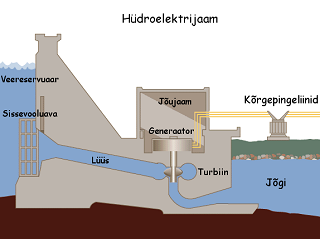From Guest Blogger Brooke Chaplan: What's Changing in Hydro Energy with California's Drought?

Today we are all aware of the longstanding water shortage in California that threatens crop production and can lead to restrictions on commercial and domestic use of water. What may not be as readily apparent is that it can also reduce the supply of electricity. The turbines in hydroelectric dams are turned by the force of falling water, and too little water directly impacts their ability to produce electricity.
How Drought Impacts Hydroelectric Power Production
California has a rich history with water resources and has resulted in the development of a large, complex system of reservoirs, dams, and related facilities which serve multiple purposes, including recreational use, flood control, and the production of electricity.
Drought does not just mean less rain, it also means less snowpack and an earlier snowmelt, both of which negatively impact water availability and power production. Due to natural variation in the water supply, there is a corresponding effect in hydroelectric production. California currently gets only 14 to 19 percent of its power from hydroelectric power supplies, substantially less than the 60% it once supplied, but still enough to cause real pain if it suddenly drops lower.
The negative impact of this effect is not evenly distributed throughout the state. Since there are generally more water resources in the northern part of the state, this is also where hydroelectric production is most heavily concentrated, which means it is also the area most heavily impacted by the shortfall. The situation is particularly problematic for some of the smaller publicly owned utilities because they tend to rely heavily on hydroelectric power.
The low cost of hydropower and its lack of polluting emissions makes it hard to find competitive replacements. Other energy sources typically either cost more, or do more harm to the environment than established hydroelectric dams. According to T. Luckey Sons, Inc. a groundwater control company that does dam repair in Ohio, keeping existing hydroelectric plants working as optimally as possible is one of the main concerns for consumers everywhere, in California and around the country.
Government Policy
Due to the on-going drought in California, the state government will be expediting paperwork related to hydroelectric plants trying to secure alternate water supplies needed to keep the power plants working. The state has also put in place processes for monitoring both the drought and its impact on power production.
Everyone hopes the drought will end soon. But, at this point, even a sudden break would not readily resolve the water and energy shortfalls it has caused. Along with other affects that have cropped up, from crop production to wildfires.
